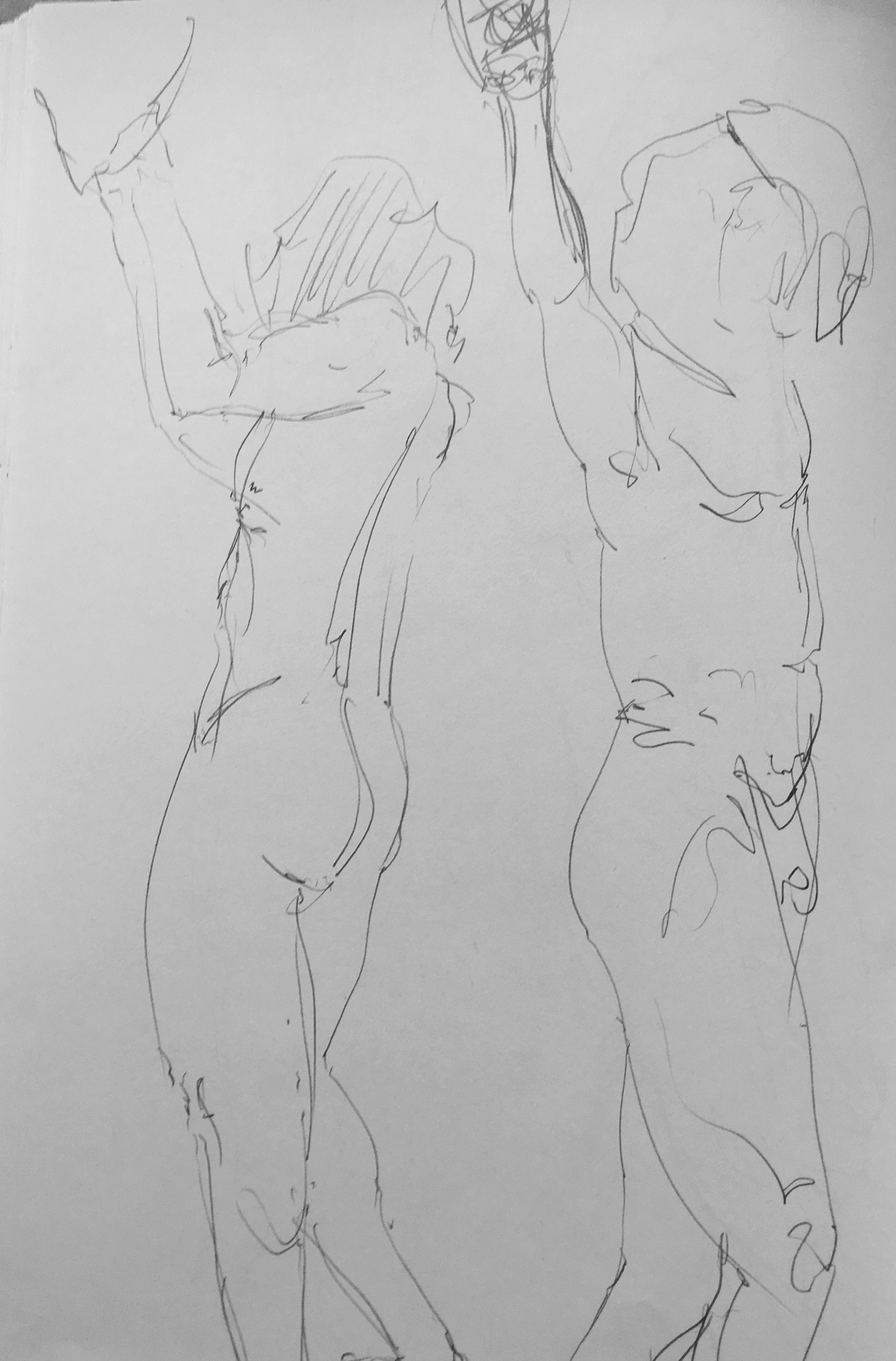Figure Painting from Live Models, pt. 2
Last month I intended to follow up my post on mixing Skin Tones with more figure studies, but I got lost in the Spring rush of work and the workshop I taught. Fortunately, paintings can wait for you, so I'm able to share them now! :)
These paintings, much like the last bunch I posted about back in February, are all done in 5-20 minute sittings. There's such a fantastic energy in this experience!! It's an absolute rush, and I just love love love the needle-tip-focus of thought and energy that goes into making the paintings. You have to make quick decisions, one after another, and most importantly of all, you have to SIMPLIFY, big time, bonding your darks together into a single wash and focusing on the directionality of the light.
I don't do any drawings, but instead just jump in, choosing an important, dynamic location on the body through which force is exerted or an expression comes out (a shoulder, an upturned chin, an important arm that's holding something, etc....) and building outwards from there. However, I spend some time each and every sitting making a plumb line with my brush to figure out where the body's weight is creating a through line, and measuring out comparative sizes of body parts (that are sometimes distorted by perspective) with a finger. It's very similar, on that level, to what you might do with charcoal or a pencil.
After that, there's no going back. I measure out the form of the model as I go along, through comparative proportion and location- the head is as big as this or that part, the arms drops down to the navel or the hip, the hand is above a foot or behind it, the front leg is in line with a shoulder, etc. The body is floating in space, so it only has to relate to itself. If the image goes off the page, I find that acceptable, because atleast things are (approximately) in proportion to themselves.
Everything starts hard edged, but then you start to work wet into wet more and more as you go along, bonding arms to legs or stomachs, dropping in darker shadows, etc. After everything has dried, I sometimes go back and drop small wet on dry details, such as the umbrella handle.
One of the focuses in the last few months has been to attempt more detailed renderings like the first image in this post, or the one just below. I do these over an hour, with three 20-minute poses. This allows for some glazing, where my lights now have value and hue (instead of being the white of the page). But the truth is that the bones are exactly the same as a single 10-20 minute pose. That's where I knock in my darks against the white of the page. All the real forms have to go in then. The rest (the pale skin for the chest below, the paler value blue for the jeans in light, etc) are all there to push the illusion of the shape being a human, but the bones of whether the composition works or not occurs at the beginning, when my lights are still the white of the page.
Of course, we still do a set of 10 2-minute sketches at the beginning of each class. I really like these because the images are almost entirely disposable. There's none of that "this is a precious work of art I must make perfect" stuff going on. It's purely mark making and paying attention. It's also a very good time to "get to know" the model- proportions, peculiarities of their body, their habits of sitting, how you're going to approach their hair, necklaces or scarfs they wear that can help express weight, etc. These early sketches become important later on when I do the 5, 10, and 20 minute sketches, because it helps me build my confidence up, for when I later jump right in with direct painting.
In each pencil sketch, I focus on something in particular I find interesting, and let the rest float away. Sometimes its the gesture of a hand or the muscles of the arm doubling back on itself...
Other times it's focusing very much on the face and the angle of the chin...
Here I found the line of the foot very elegant, and spent a great deal of time capturing it and the cast shadow on the thigh. The rest I let drift away. The goal is to create visual priority.
These sorts of sketches become very important when I start to attempt tighter renderings. I'm already acquainted with atleast a few of the peculiarities of the model's body, and so can pay better attention to them. Whether its the thinness of the thighs on one, the broad chest of another...
Or the angular cheek bones and bold hair of another.












